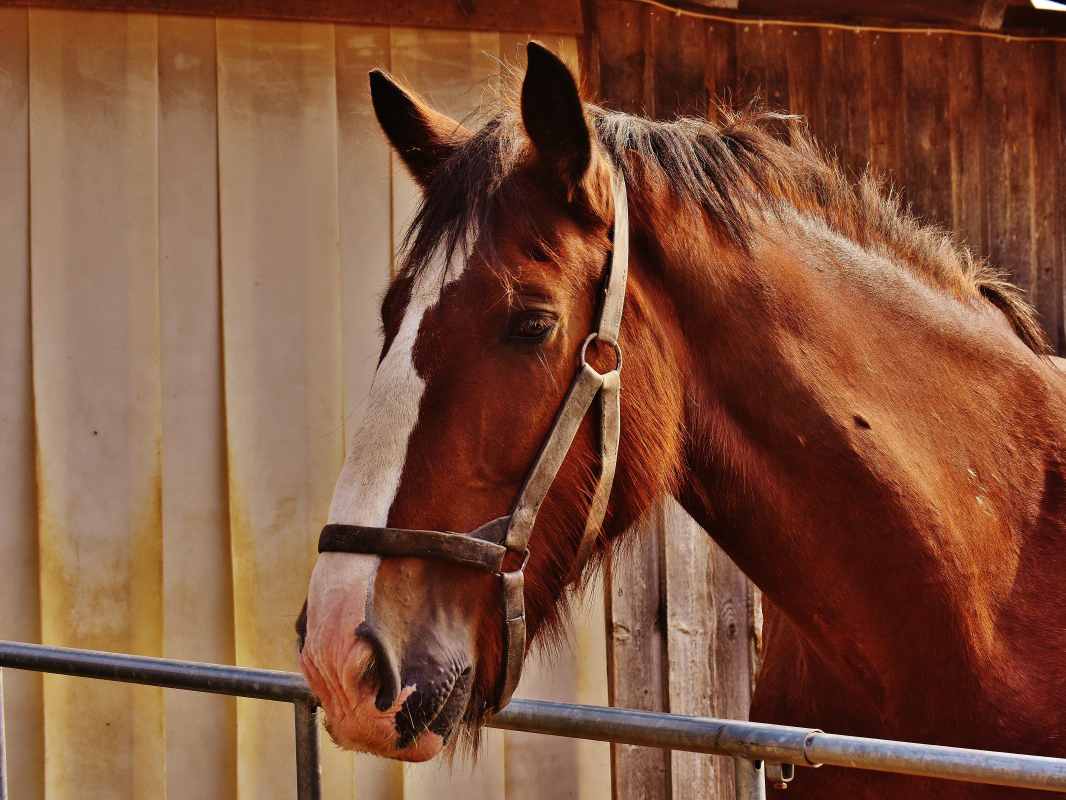Cancer And Large Animals
Cancer is a unique ailment in that it can be found in nearly every species, no matter how small or how large. Luckily, our fight against cancer is as widespread as the disease itself and veterinarians are able to provide treatment to many animals, from cats and dogs to cows and horses.
 Dr. Leslie Easterwood, a clinical assistant professor at the Texas A&M College of Veterinary Medicine & Biomedical Sciences, works with horse and livestock owners at the Large Animal Hospital to manage cancerous growths in our larger furry friends.
Dr. Leslie Easterwood, a clinical assistant professor at the Texas A&M College of Veterinary Medicine & Biomedical Sciences, works with horse and livestock owners at the Large Animal Hospital to manage cancerous growths in our larger furry friends.
Easterwood says that there are many different symptoms of cancer in large animals, dependent on the location and impact of the mass, but that the most common signs noticed by owners are external (visible) tumors and unexplained weight loss. Owners of white-skinned horses may wish to pay extra attention to the well-being of their animal, as they are particularly prone to tumors around their eyes, nose, and genitalia; therefore, these animals should be screened regularly.
“Have masses looked at as soon as possible,” Easterwood said. “It is far easier to resolve a tumor when it is small, and it is much more likely to have a good outcome.”
When having an animal screened, a veterinarian will likely perform a physical exam and conduct the appropriate diagnostic tests to determine whether a mass exists and, if so, if it is malignant. This may include blood tests, imaging, and a taking a biopsy of the tumor.
“For large animals, the first step to any cancer treatment is a definitive diagnosis of the tumor type,” she said. “This is usually done by sending the tumor tissue to a lab for analysis under the microscope.”
Once the tumor is identified, a veterinarian will likely “debulk” the tumor, or surgically remove as much of the mass as possible. The small amount of remaining tumor can be treated with a variety of adjunctive therapies, or therapies used in conjunction with a primary treatment.
A veterinarian may recommend chemotherapy, cryotherapy (freezing the mass), photodynamic dye therapy (a light-activated targeted drug therapy), electrochemotherapy (which uses electric pulses to improve absorption of chemotherapy drugs), and/or hyperthermia (killing cancer cells with heat).
Easterwood notes that while small animals and humans are usually treated with systemic chemotherapy agents, large animals are usually injected with a localized treatment or treated with topically administered drugs. There are also additional medication regulations to be considered for animals intended for human consumption.
“Beyond the need for repeated visits, there are not many additional treatment factors for large vs. small animals,” Easterwood said. “Just as cancers may be similar across many different species, so are their treatments. Described most simply, cancer is the uncontrolled growth of abnormal cells, so the goal in all cancer treatments is to halt the growth of and remove these abnormal cancer cells.”
Though a cancer diagnosis is certainly never a welcome event, owners who take prompt action can provide their animal with the best chance of full remission to live as happy and as healthy a life as possible following diagnosis.
Pet Talk is a service of the College of Veterinary Medicine & Biomedical Sciences, Texas A&M University. Stories can be viewed on the web at vetmed.tamu.edu/news/pet-talk. Suggestions for future topics may be directed to editor@cvm.tamu.edu.


